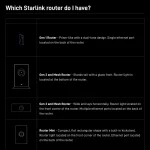BT Prepare Phase 2 Vectoring Trials to Boost UK FTTC Broadband Speeds

BTOpenreach has decided to extend their on-going trials of VDSL Vectoring (ITU-T G.993.5) technology into a second phase, which could improve the speeds delivered via BT’s existing “up to” 80Mbps hybrid-fibre (FTTC) superfast broadband network by helping to eliminate interference (crosstalk). But it might also push any future roll-out back to late 2014 or 2015.
Regular readers will recall that Openreach began their first field trials of Vectoring technology in September last year, which works a bit like those noise cancelling headphones and employs the coordination of multiple copper line signals in order to create a reduction of interference (i.e. in order to work at its best all of a street cabinets FTTC lines must be upgraded but there is some flexibility).
Advertisement
The first trial began with three street cabinets [26, 41 and 42] in Barnet (London) and another three [12, 39 and 74] in Braintree (Essex). At the time Openreach said that its trials would be “monitoring the maximum speed trial lines could theoretically achieve” and indeed similar deployments by Eircom in Ireland have seen headline rates jump from “up to” 70Mbps to 100Mbps. Danish Vectoring trials, which are arguably more comparable to the UK’s infrastructure, have also recorded a similar capability jump to 100Mbps.
However BT’s Head of Access Platform Innovation, Kevin Foster, last year cautioned that Vectoring was being seen more as a “speed enabler rather than a speed booster” and the operator currently has no immediate plans to increase the advertised rate from its current maximum of 80Mbps (but we wouldn’t be at all surprised if they did.. eventually).
At the same time ISPreview.co.uk also revealed last year that Openreach had been conducting a separate “limited trial” of Physical Retransmission (G.INP) on a small number of FTTC/VDSL lines (here), which is a method designed to tackle spikes / burst of electromagnetic interference (impulse noise); this can make some problematic lines more stable and less prone to errors (we’ll touch on this again later). Sky Broadband also use G.INP.
But since last year we’ve heard very little about the progress of Openreach’s trial, which is not for lack of trying. The good news is that the sheet of thick ice that appears to have been covering the flow of Vectoring related information from BT appears to be thawing, which began in February 2014 after we heard that BT had begun evaluating the results from the first trial.
Advertisement
Trial Phase One.. Results?
The first good news surfaced in March 2014 when a communication to ISPs revealed that BT had seen what appears to be, as PlusNet put it, a “very positive” outcome to the Vectoring trials. Similarly ISPreview.co.uk has kept in contact with three customers on the relevant street cabinets, albeit only those with good lines that already ran at between 50-70Mbps, and all have reported improved download speeds with an increase of around 10-15Mbps+.
Upstream speeds will also benefit, although our group already had close to the headline rate and this made it difficult to know what to expect. Crucially we have no data for longer/slower lines, which are arguably of much more interest, although Eircom’s new line profiles for FTTC / VDSL Vectoring might offer some hints. Just remember that there are differences between the telecoms platforms but these do appear, at first glance, to be quite similar to the general expectations for vectored FTTC lines.
Eircom (Ireland) FTTC Vectored Line Profiles
Line Length (max) – Down (Mbps) – Up (Mbps)
300m – 100 – 20
450m – 90 – 20
525m – 80 – 20
600m – 60 – 20
750m – 50 – 20
850m – 40 – 10
1000m – 30 – 8
1200m – 25 – 8
1300m – 18 – 5
1500m – 15 – 3
1700m – 12 – 1
2000m – 7 – 1
It’s worth pointing out that some Vectored FTTC lines could go beyond 100Mbps (we’ve heard of 120-130Mbps being possible), although ISPs tend to like capping a bit below the peak (partly to avoid raising expectations when going mass-market). In any case if something similar to the above is confirmed for the UK then it might mean more people gaining access to “superfast” (30Mbps+) speeds, which would no doubt be a boost for the Government’s Broadband Delivery UK (BDUK) plan (the vast majority of FTTC lines are on a sub-1000m run of copper).
Back in the UK and some ISPs have suggested that the number of subscribers achieving the headline rate of 80Mbps has noticeably increased since Vectoring was enabled in related areas, which makes sense given the 10-15Mbps+ speed gains being reported by some.
Advertisement
However Openreach has since clarified to ISPreview.co.uk that vectoring will have the “most impact” on lines between 50m and 500m (note: most of these might already be getting “superfast”). But beyond 500m vectoring impact reduces and “very little gain” was seen past 1.5km, although Openreach did note some limited speed improvements for a few longer lines impacted by cross-talk. It’s important to remember that not even Vectoring can overcome the laws of physics.
As previously expected, Openreach also had to remotely update the firmware for some of their VDSL Modem’s and a few others needed to be replaced in order to work with Vectoring but the “majority” were not a problem. However we can see this being more of an issue if people have adopted third-party VDSL routers because some of the early kit doesn’t seem to support Vectoring (note: this won’t stop vectoring from working for everybody on the cabinet).
Trial Phase Two
So far, so good and Openreach believes that it can push even more performance out of Vectoring. But in order to test that they need to conduct a second trial in the same areas, which we’re informed will take place during the summer 2014 period and last for around 3 months (possibly longer or shorter) much like the first trial. Note: decisions are yet to be taken on the inclusion of further street cabinets.
The new trial will also include both Physical Retransmission (G.INP) and Seamless-Rate-Adaptation (SRA) technologies, which Openreach said they’re “very interested in testing” and see as being useful to help augment the benefits provided by vectoring. Back in 2011 BT ruled out SRA for its older ADSL2+ lines (here) but it’s good to see they have plans for it alongside FTTC/VDSL; SRA does a much faster and more reliable job of varying your line speed depending on its quality.
Openreach also told ISPreview.co.uk that its new trial would evaluate an enhanced vectoring engine (ASIC), which is “capable of cancelling out significantly more cross-talk interferes per line“. But contrary to some suggestions BT claims that its plans have “always” been based around the use of an ASIC vector engine, although outside of the trial they’re currently said to be determining the potential use of vectoring through “normal governance processes“. An ASIC version of the hardware instead of FPGA could have implications for the cost of deployment.
Officially no decision has been taken on whether or not to deploy Vectoring across the United Kingdom, although the positive outcome from Openreach’s first trial suggests that the only real hurdle might end up being the issue of cost. But this could easily be outweighed by a desire to remain competitive with Virgin Media and rising expectations from the Government’s broadband scheme.
Admittedly there are some other problems too, such as the need to replace a small number of VDSL modems and compatibility issues with Sub Loop Unbundled (SLU) ISPs that use different kit. However SLU providers don’t cover that many people, especially since Digital Region’s collapse in South Yorkshire, and new solutions are being explored.
On top of all that, if BT are serious about adopting the next generation of FTTC style technologies (e.g. G.fast) then Vectoring will be essential. Put another way, we wouldn’t bet against Vectoring’s introduction but the additional trial means it might be 2015 before we see it, but that’s just our own speculation given the summer start period.
Mark is a professional technology writer, IT consultant and computer engineer from Dorset (England), he also founded ISPreview in 1999 and enjoys analysing the latest telecoms and broadband developments. Find me on X (Twitter), Mastodon, Facebook, BlueSky, Threads.net and Linkedin.
« UPD Virgin Media UK Launch Big Bundles of Quad Play Broadband and Mobile























































Comments are closed